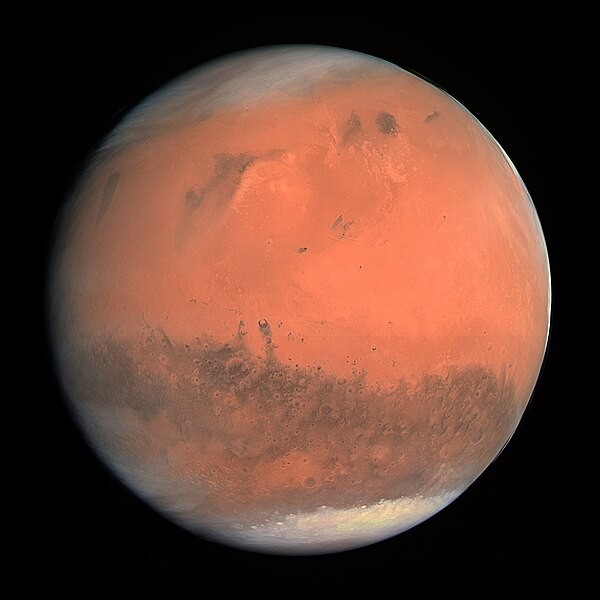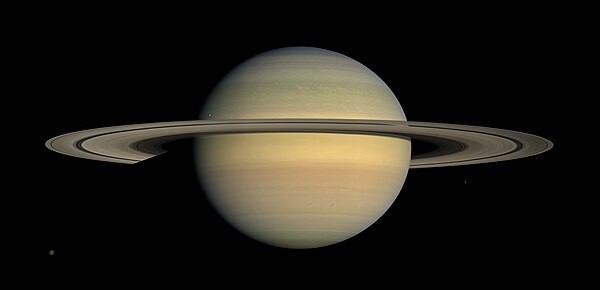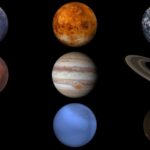How Long Is 1 Day In Space Compared To Earth? COMPARE.EDU.VN explores the fascinating differences in planetary rotation, offering insights into the varying lengths of a day across our solar system. Understanding these differences sheds light on the unique characteristics of each planet and provides a comparative perspective of time relative to Earth, revealing astronomical day and night contrasts.
1. Introduction: The Relativity of Time Across the Cosmos
The concept of a “day” is deeply ingrained in our daily lives, defined by the Earth’s rotation on its axis. However, this familiar 24-hour cycle is far from universal. Across the vast expanse of space, each planet possesses its own unique rotational period, resulting in vastly different day lengths. On some celestial bodies, a single day can stretch for hundreds or even thousands of Earth hours, while on others, the sun rises and sets in a matter of mere hours. This comparative study, brought to you by COMPARE.EDU.VN, delves into the intriguing question: “How long is 1 day in space compared to Earth?” We will explore the diverse rotational periods of planets in our solar system and beyond, highlighting the factors that influence these variations and offering a captivating glimpse into the relativity of time across the cosmos. Discover the differences between solar day, sidereal day, and the effects of elliptical orbits on the measurement of time.
2. Defining a “Day”: Solar vs. Sidereal
Before diving into the specifics of planetary day lengths, it’s essential to clarify what we mean by a “day.” There are two primary ways to measure a planet’s rotation:
2.1. Solar Day: The Sun’s Perspective
A solar day is the time it takes for a planet to rotate such that the Sun appears in the same position in the sky. This is the type of day we experience on Earth, from sunrise to sunrise. Earth’s solar day is approximately 24 hours.
2.2. Sidereal Day: A Starry Reference
A sidereal day, on the other hand, is the time it takes for a planet to complete one full rotation with respect to the distant stars. Earth’s sidereal day is slightly shorter than its solar day, at around 23 hours and 56 minutes.
2.3. The Difference Explained
The slight difference between a solar day and a sidereal day arises from the Earth’s orbit around the Sun. As Earth rotates, it also moves along its orbit, requiring slightly more than one full rotation for the Sun to return to the same position in the sky.
3. Earth’s Rotation: A Baseline for Comparison
To understand how long a day is on other planets, we need a baseline. Earth’s rotation provides this foundation.
3.1. The 24-Hour Cycle
As mentioned earlier, Earth’s solar day is approximately 24 hours. This cycle governs our sleep patterns, work schedules, and countless other aspects of our lives.
3.2. Factors Affecting Earth’s Rotation
While we often think of Earth’s rotation as constant, it actually varies slightly over time. Factors such as tidal forces from the Moon and Sun, as well as changes in Earth’s interior, can cause subtle variations in the length of a day.
3.3. Implications of Earth’s Rotation
Earth’s rotation is not just a matter of telling time; it also has profound effects on our planet’s climate, weather patterns, and even the shape of the oceans. The Coriolis effect, caused by Earth’s rotation, deflects winds and ocean currents, influencing global circulation patterns.
4. Planetary Rotations: A Solar System Tour
Now, let’s embark on a tour of our solar system, comparing the length of a day on each planet to that of Earth.
4.1. Mercury: The Slowest Spinner
Mercury, the innermost planet, has the longest solar day in the solar system, clocking in at a whopping 1,408 Earth hours (58.65 Earth days). This sluggish rotation is due to Mercury’s tidal locking with the Sun, where the Sun’s gravitational pull has slowed Mercury’s rotation over billions of years.
Alt text: A color enhanced image of Mercury showing its heavily cratered surface and subtle color variations due to mineral composition.
4.2. Venus: Rotating in Reverse
Venus stands out for two reasons: its incredibly long solar day and its retrograde rotation (spinning in the opposite direction of most other planets). A solar day on Venus lasts 5,832 Earth hours (243 Earth days), making it longer than its orbital period (the time it takes to orbit the Sun).
4.3. Mars: An Earth-Like Rhythm
Mars, our neighbor, has a rotation period remarkably similar to Earth’s. A solar day on Mars, often called a “sol,” is approximately 24.6 hours, just slightly longer than an Earth day. This similarity has made Mars a popular target for future colonization.
4.4. Jupiter: A Whirlwind of Activity
Jupiter, the largest planet in our solar system, is also one of the fastest spinners. A solar day on Jupiter lasts only about 10 Earth hours. This rapid rotation contributes to Jupiter’s flattened shape and its intense weather patterns, including the Great Red Spot, a giant storm that has raged for centuries.
4.5. Saturn: Ringed and Rapid
Saturn, famous for its stunning rings, also boasts a rapid rotation. A solar day on Saturn is approximately 10.7 Earth hours, similar to Jupiter’s. Saturn’s rapid spin contributes to its oblate shape and its complex atmospheric dynamics.
4.6. Uranus: Tilted and Turning
Uranus is unique for its extreme axial tilt, rotating nearly on its side. A solar day on Uranus lasts about 17 Earth hours. This unusual orientation leads to extreme seasonal variations, with each pole experiencing decades of continuous sunlight or darkness.
4.7. Neptune: Distant and Dynamic
Neptune, the farthest planet from the Sun, has a solar day of approximately 16 Earth hours. Despite its distance from the Sun, Neptune is a dynamic planet with strong winds and large storms, driven by its internal heat and rapid rotation.
5. Charting the Differences: A Visual Comparison
To better visualize the differences in planetary day lengths, let’s present the data in a table and a graph.
5.1. Table of Planetary Day Lengths
| Planet | Day Length (Earth Hours) | Day Length (Earth Days) |
|---|---|---|
| Mercury | 1,408 | 58.65 |
| Venus | 5,832 | 243 |
| Earth | 24 | 1 |
| Mars | 24.6 | 1.03 |
| Jupiter | 10 | 0.42 |
| Saturn | 10.7 | 0.45 |
| Uranus | 17 | 0.71 |
| Neptune | 16 | 0.67 |


5.2. Graph of Planetary Day Lengths
Alt text: Bar graph comparing planetary rotation speeds, showing the relative length of a day on each planet compared to Earth.
This graph provides a visual representation of the stark differences in day lengths across our solar system. The graph clearly shows how Mercury and Venus have exceptionally long days compared to the other planets, while the gas giants (Jupiter and Saturn) have the shortest days.
6. Exoplanets: Beyond Our Solar System
The diversity of planetary rotations doesn’t end with our solar system. Exoplanets, planets orbiting stars other than our Sun, exhibit an even wider range of rotational periods.
6.1. Tidally Locked Exoplanets
Many exoplanets, particularly those orbiting close to their stars, are tidally locked, meaning one side always faces the star while the other side remains in perpetual darkness. This results in extreme temperature differences between the two hemispheres.
6.2. Hot Jupiters: Rapid Rotators
Hot Jupiters, gas giant exoplanets that orbit very close to their stars, tend to have rapid rotation rates due to tidal forces. Their days can be as short as a few Earth hours.
6.3. Rogue Planets: Unbound and Unpredictable
Rogue planets, also known as interstellar planets, are not bound to any star and wander through space alone. Their rotational periods are difficult to determine, but they are likely influenced by collisions with other objects and gravitational interactions with other celestial bodies.
7. Factors Influencing Planetary Rotation
Several factors influence a planet’s rotation, including:
7.1. Formation Processes
The initial rotation of a planet is determined by the angular momentum of the gas and dust cloud from which it formed.
7.2. Tidal Forces
Tidal forces from a star or other planets can slow down or even lock a planet’s rotation over time.
7.3. Collisions
Collisions with other objects can alter a planet’s rotation, as evidenced by Uranus’s extreme axial tilt.
7.4. Internal Structure
A planet’s internal structure, including the distribution of mass and the presence of a liquid core, can also affect its rotation.
8. The Implications of Varying Day Lengths
The length of a day on a planet has profound implications for its climate, weather patterns, and potential for life.
8.1. Temperature Variations
Planets with long days experience extreme temperature variations between their day and night sides.
8.2. Weather Patterns
The speed of a planet’s rotation influences its wind patterns and the formation of storms.
8.3. Biological Rhythms
Life on a planet with a drastically different day length than Earth would have to adapt to a very different biological rhythm.
9. The Future of Timekeeping: Beyond Earth Days
As we explore and potentially colonize other planets, we will need to develop new systems of timekeeping that are adapted to the local conditions.
9.1. Martian Time
Scientists have already developed a system of Martian time, with a “sol” being slightly longer than an Earth day.
9.2. Universal Time Standards
In the future, we may need to develop universal time standards that are independent of any particular planet’s rotation.
9.3. The Importance of Accurate Measurement
Accurate measurement of planetary rotations is crucial for navigation, communication, and scientific research.
10. COMPARE.EDU.VN: Your Guide to Cosmic Comparisons
Understanding the varying lengths of a day in space provides a fascinating perspective on the diversity and complexity of our universe. At COMPARE.EDU.VN, we strive to provide comprehensive and accessible comparisons across a wide range of topics, from planetary science to everyday technology.
10.1. Explore the Cosmos with Us
Visit COMPARE.EDU.VN to explore more articles on space exploration, planetary science, and the wonders of the universe.
10.2. Make Informed Decisions
Whether you’re a student, a researcher, or simply a curious mind, COMPARE.EDU.VN is your go-to resource for making informed decisions based on accurate and reliable information.
10.3. Contact Us
Have questions or suggestions? Contact us at 333 Comparison Plaza, Choice City, CA 90210, United States. You can also reach us via Whatsapp at +1 (626) 555-9090 or visit our website at COMPARE.EDU.VN.
Navigating the complexities of different options can be challenging. Do you find yourself overwhelmed by the sheer volume of information when trying to make a decision? Are you looking for a way to compare products, services, or ideas in a clear and unbiased manner? Then visit compare.edu.vn today and discover the ease of making informed choices.
FAQ: Frequently Asked Questions About Planetary Rotation
1. Why do different planets have different day lengths?
Planets have different day lengths due to variations in their initial angular momentum, tidal forces, collisions, and internal structures.
2. Which planet has the longest day?
Venus has the longest day in our solar system, lasting 5,832 Earth hours (243 Earth days).
3. Which planet has the shortest day?
Jupiter has the shortest day in our solar system, lasting about 10 Earth hours.
4. What is the difference between a solar day and a sidereal day?
A solar day is the time it takes for the Sun to appear in the same position in the sky, while a sidereal day is the time it takes for a planet to complete one full rotation with respect to the distant stars.
5. How does a planet’s rotation affect its climate?
A planet’s rotation influences its temperature variations, wind patterns, and the formation of storms.
6. Are there planets that don’t rotate?
While no planet is known to have absolutely zero rotation, some tidally locked planets rotate so slowly that one side always faces their star.
7. Could humans live on a planet with a very long day?
Living on a planet with a very long day would present significant challenges due to extreme temperature variations and altered biological rhythms.
8. How do scientists measure the rotation of exoplanets?
Scientists measure the rotation of exoplanets by observing changes in their brightness as different parts of their surface rotate into view.
9. What is a “hot Jupiter”?
A “hot Jupiter” is a gas giant exoplanet that orbits very close to its star, resulting in high temperatures and rapid rotation.
10. Why is Uranus tilted on its side?
Uranus is believed to have been tilted on its side by a collision with another large object early in its history.
